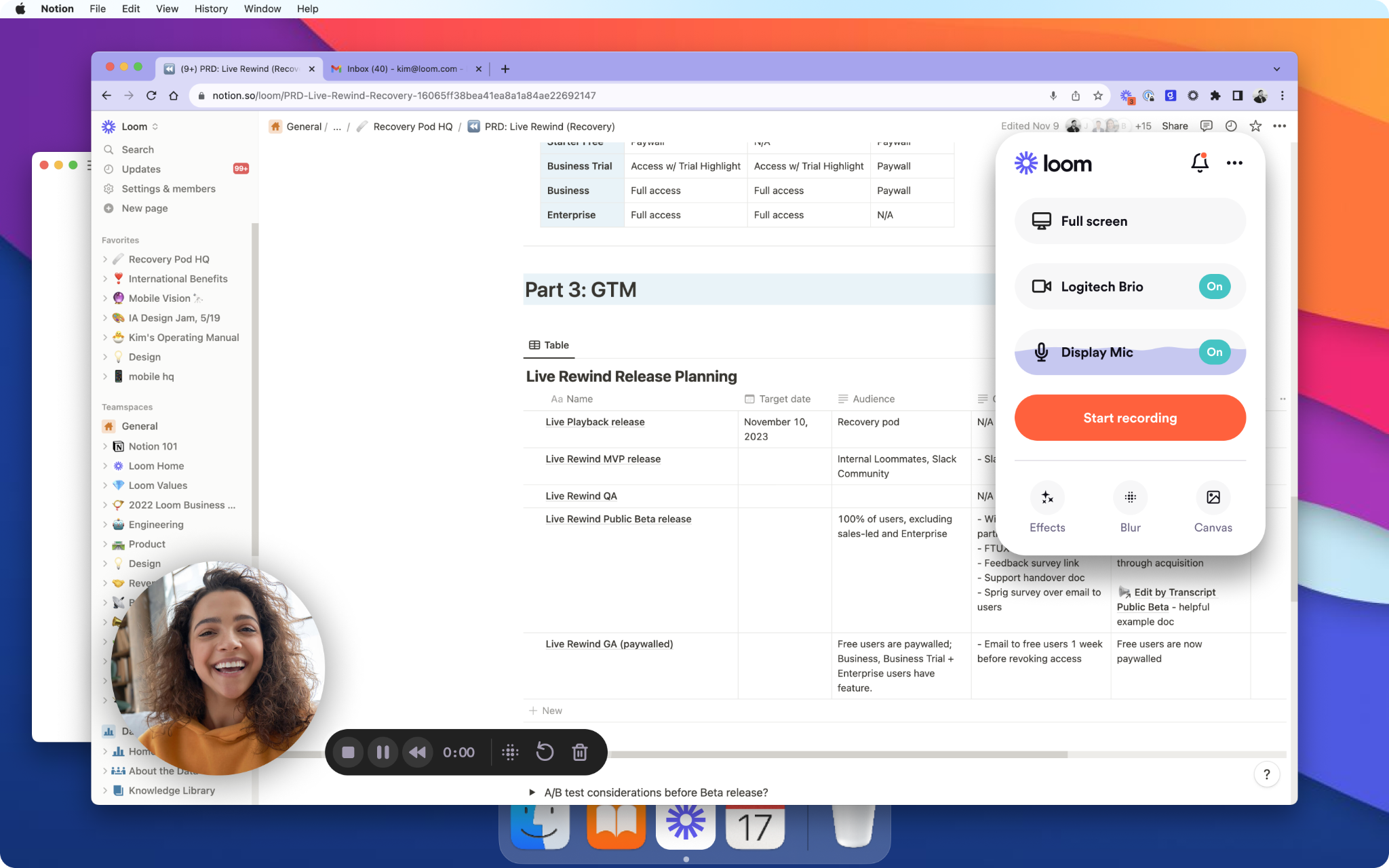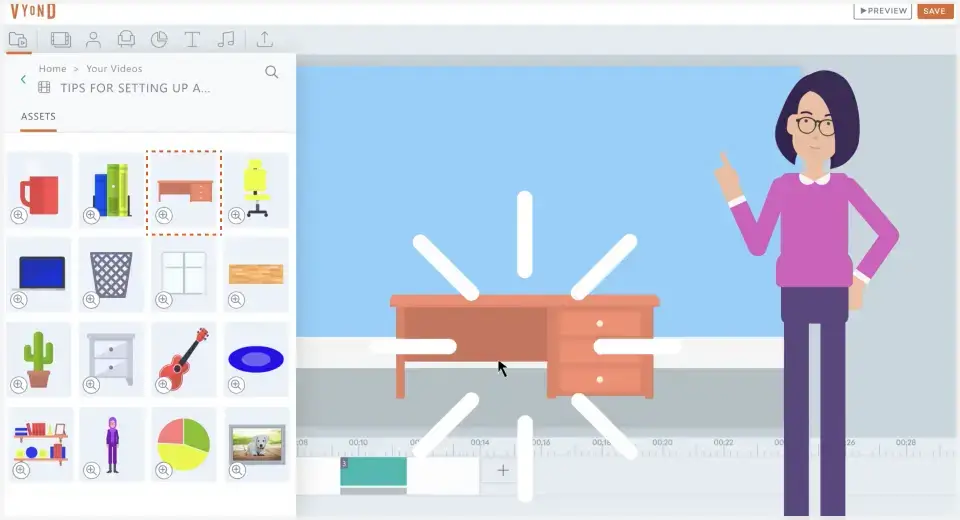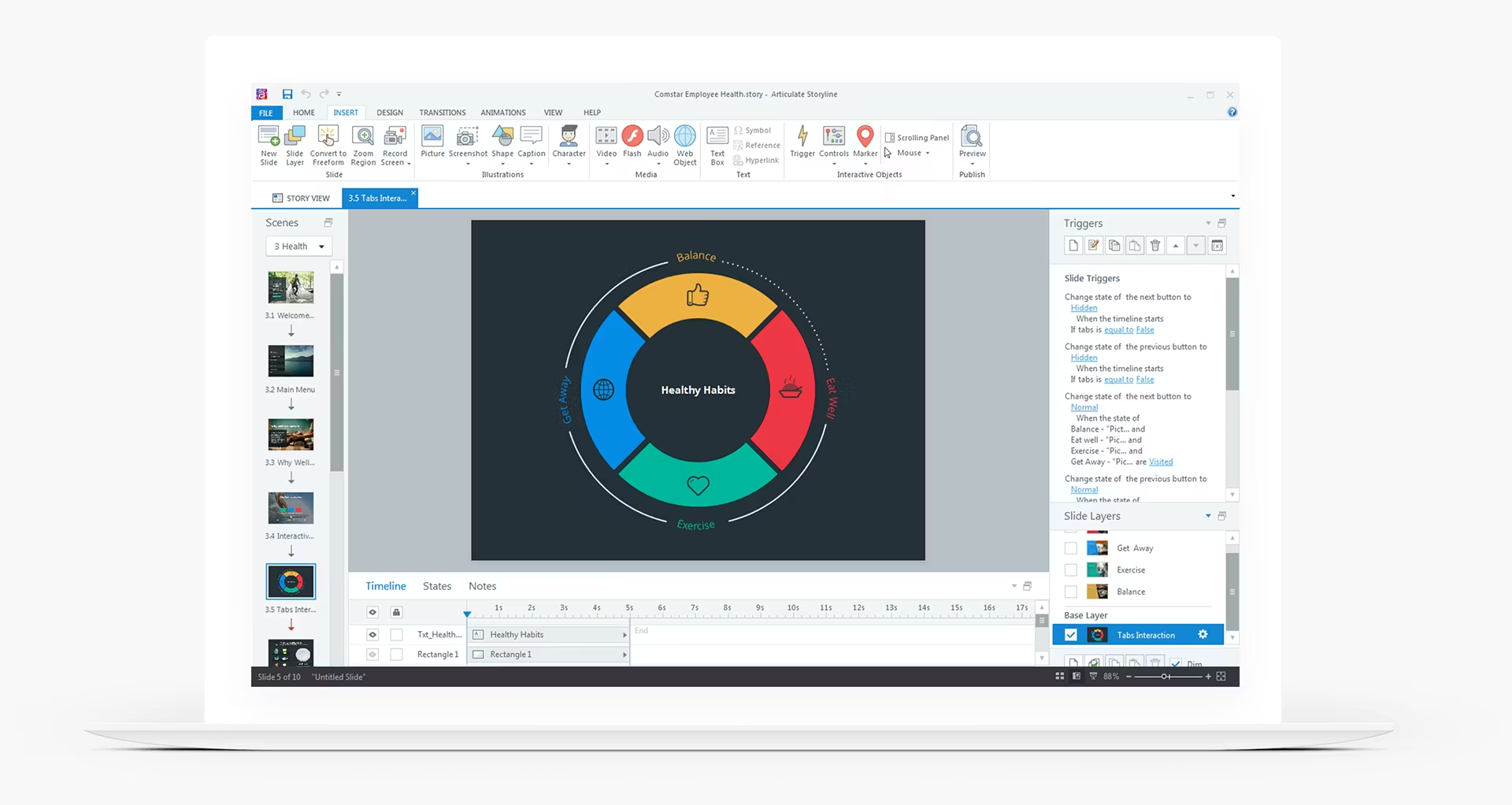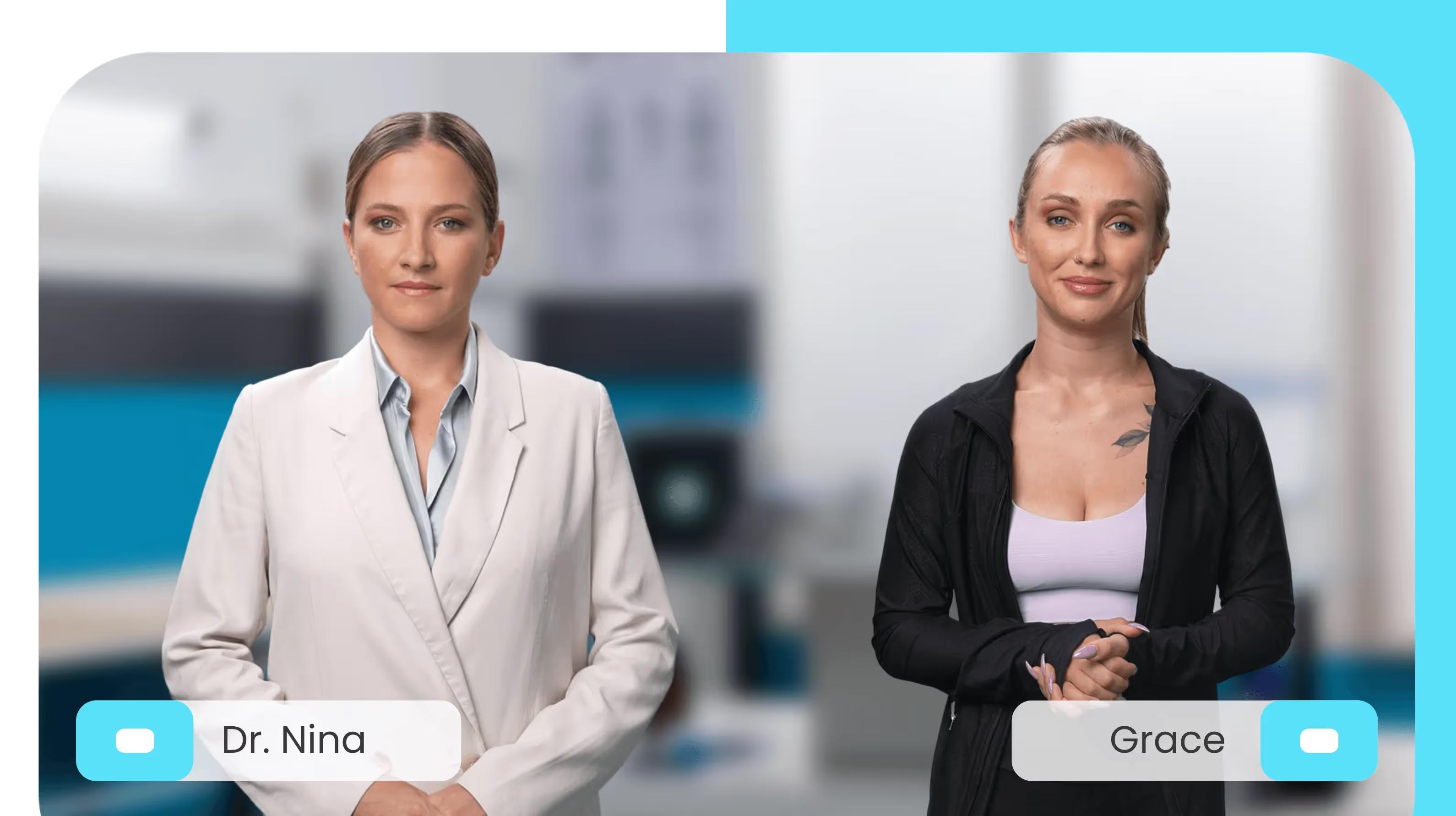Instant Avatar
Instant Avatars can be recorded using your phone or camera, and created in under a minute. These avatars are quick and easy to create, and they keep your original background and movements.
.avif)

7 Best E-Learning Video Software Tools for Clear, Engaging Content

Video is now the first choice for workplace learning. It's not just preference-over 80% of learners say they’d pick video over written or audio content for instructions (source). Short videos (3–6 minutes) boost knowledge retention, help people reach full productivity faster, and can cut training costs or onboarding time (source). But picking the right tool is harder than ever.
Instructional teams rarely have big design skills or weeks to spare. On Reddit, teams say they want clear interfaces, fast production, interactive options, and straightforward pricing. Advanced, legacy tools like Adobe are seen as overkill. Teams are increasingly interested in AI avatars, easy collaboration, and outputs that plug into existing LMS systems.
When comparing e-learning video software, focus on a few criteria: simple UX, device-agnostic playback, captions, easy sharing, interactivity (quizzes, branching), quick editing, analytics, SCORM/xAPI support, translation, and permissions controls. Below are the top solutions, how they fit real teams-and how Colossyan (where I work) stacks up for those who want to move fast, stay on brand, and keep content interactive.
The 7 best e-learning video software tools (with examples, pricing snapshots, and ideal use cases)
1) Colossyan - best for AI-driven, on-brand training videos with interactivity and SCORM at scale

Colossyan lets you take a document or slide deck and turn it into short, interactive training videos featuring AI avatars-no advanced skills required. Everything you need for compliant, on-brand, and measurable e-learning is built in.
Here’s how it works. You drag in a doc or PPT. Colossyan splits it into scenes, writes initial narration, and suggests avatars. You can clone your own voice, set up company colors and logos with a Brand Kit, and even define exact pronunciations for tricky words. Need quizzes or scenario practice? Add multiple choice or branching interactions by dragging them in.
You can translate the whole video, script, and interactions in one click-useful for global teams. Export in SCORM 1.2/2004 so your LMS tracks pass/fail and scores. Built-in analytics show plays, time watched, and quiz performance. For large organizations, workspace roles and centralized libraries make governance smooth.
For example, I’ve turned a 20-page safety policy into five 3–5 minute micro-training videos, each with an 80% quiz threshold. Colossyan’s analytics told me exactly which sections had drop-off, so I added a branching remediation scene there.
If you want to keep videos engaging, split longer scripts into several microlearning videos using Colossyan’s timeline. It drastically reduces manual editing-ideal given most learners decide in the first 5–10 seconds if a video is worth watching.
One watchout: define your visual and word rules up front-AI is only as good as the style and pronunciations you set for company names and jargon.
2) Loom - best for rapid screen and webcam captures with effortless sharing

Loom is frictionless: click, record your screen (or webcam), share a link. The free tier gives you 25 five-minute videos with unlimited transcription. Paid plans (~$12.50/user/month) bring unlimited length, advanced AI add-ons, editing while you record, and password-protected sharing.
Use Loom when you need quick demos, walk-throughs, or async knowledge capture. The tradeoff: editing options are basic, and interactive assessments or SCORM packaging aren’t native.
But you can import Loom screen recordings into Colossyan, add avatar intros, or embed a quick quiz before exporting it as SCORM for tracking.
3) Camtasia - best for powerful desktop editing and polished screen-record training

Camtasia is the gold standard for desktop-based video editing-think detailed tutorials or technical demos with fine-grained control. You get quizzes, PowerPoint integration, pro transitions, and effects. Subscriptions are around $180–$225/year.
It’s less cloud-friendly, collaboration can slow down, and output is still manual. Editing mastery takes time, and Mac users report some snags.
If you need to add presenter intros or translations, create those segments in Colossyan (with brand avatars/voice) and splice them into Camtasia. Or take your finished Camtasia video, import to Colossyan, layer on quizzes, and export in SCORM without rebuilding.
4) Vyond - best for animated explainer videos with large asset libraries

Vyond stands out for its huge animated prop library and character styles (over 40,000 props, 70+ languages, auto lip sync). Pricing often lands at $25/month or $299/year.
If you need animated stories rather than presenter-led courses, Vyond is a strong choice-though cost comes up a lot as a concern on Reddit. Videos with more than 100 scenes can’t be previewed at once.
If you need a realistic presenter or fast translations, use Colossyan’s AI avatars (styled for your brand), keep scenes short, and drop in interactive MCQs for comprehension. Then export as SCORM.
5) Articulate 360 - best for end-to-end course authoring with AI and multi-tool suite

Articulate 360 is a full ecosystem: you get AI upgrades that turn static docs into interactive courses, suite-wide collaboration, analytics, translations, and localization. Output supports nearly every compliance need (SCORM/xAPI/Reach).
Go here if you’re building full e-learning courses with multi-slide branching, deep logic, or compliance tracking. It’s more than you need for pure video, but you can embed Colossyan videos inside Storyline/Rise modules, or use Colossyan for rapid video creation where a “full course” is overkill.
6) Panopto - best for secure video management, lecture capture, and enterprise search

Panopto is about centralization and control. It’s widely used in higher ed and enterprise. You get secure video storage, AI-powered keyword search, quizzes, LMS integrations, automatic translation, and on-demand or live broadcast.
It’s not a video creator-think robust video management. When making new content, I produce avatar-led training in Colossyan, export as MP4 or SCORM, and let Panopto handle discovery, permissions, and analytics.
7) iSpring Suite AI - best for powerpoint-first teams needing standards-compliant outputs

iSpring Suite AI transforms PowerPoint slides into SCORM/AICC/xAPI packages; you can add narration (text-to-speech), quizzes, and rapid translation. It’s a desktop tool (~$1,290/year, discounts for academia/freelancers), with rapid course assembly and compliance coverage.
If you build everything in PPT, this is about as streamlined as it gets. But reviews and collaboration are slower compared to cloud solutions. Accelerate by importing your PPTs into Colossyan to auto-generate scene-based, presenter-led video, drop in interactivity, export in SCORM, or back-embed MP4s for richer results.
Honorable mentions (quick picks)
- Adobe Captivate: AI-first eLearning authoring, rapid image gen, PPT-to-interactive, responsive layouts.
- LearnWorlds: Interactive video with built-in analytics; best for full course hosting.
- ScreenPal: Affordable screen recording, cloud editing; watermark on free, analytics on higher plans.
- Vimeo: High-res hosting, quizzes, and video analytics.
- WeVideo: Interactive layers (polls, quizzes), real-time analytics, multi-editor collaboration.
How to choose: map needs to tools (and how to accelerate with Colossyan)
If you want speed and minimal upskilling, start with Loom or Colossyan. Colossyan’s strengths are in automating doc-to-video flows, adding AI avatars, quizzes, and SCORM export for compliance. If you do advanced desktop editing, Camtasia is best-supplement with Colossyan’s translation, interactive, or avatar features. For animated stories, Vyond is strong, but when you want a human presenter or fast language variants, Colossyan takes the edge.
If you need course-level structure and compliance, Articulate or iSpring lead the pack-importing Colossyan videos lifts engagement without slowing production. If hosting and governance matter most, Panopto is the home base, and Colossyan is where you make the source material.
Best-practice design tips backed by the research
Stick to each video’s 3–6 minute engagement window. Split scripts into shorter micro-videos-Colossyan’s scene timeline makes this easy. Hit your main point in the first 5–10 seconds; open with a clear avatar statement of “here’s why you’re watching.” Reinforce with short quizzes (target 80% pass rates) inside the video.
Optimize for mobile. In Colossyan, resize canvas or auto-translate for seamless global rollouts. Use analytics: see play rates, quiz scores, and drop-off points, then iterate.
Real-world buying signals and examples you can reference
Most teams want speed, cost-effectiveness, and simple workflows-not feature overload. The shift away from heavy, desktop-only software toward cloud tools is clear (Reddit insight). Many businesses stick to LMSs for tracking, but async video tools with analytics, central storage, and mobile playback are increasingly preferred (Atlassian insight).
Teams replace week-long production cycles with same-day Colossyan scripts: take a static slide deck, add an Instant Avatar, insert interactive branching, export SCORM, and release on your LMS. Speed plus engagement-no deep expertise needed.
Implementation checklist to go live quickly (with specific colossyan steps)
Set your Brand Kit up front (fonts, colors, logos) for consistency. Import docs or PPTs, draft narration with AI, and correct key pronunciations. Add MCQs or branching (for interaction), set pass marks, and export in SCORM format for LMS tracking. Localize instantly where needed, assign workspace roles, and review content with team comments in-app. Use scene-level previews to catch issues, share quick-links for review, and track engagement and scores in Colossyan’s built-in analytics.
Closing note
No tool or workflow is perfect for every team. Start by mapping what matters most for your L&D goals-speed, scale, compliance, and language support. Try shortlist pilots with your real content. Aim to launch one short, interactive, and, if you need, multilingual module end-to-end to judge speed and outcomes. That’s the real test of whether a tool fits your needs and delivers the clarity your learners deserve.

Heading
Use this template to produce videos on bestpractices for relationship building at work.

Heading
Create healthcare training with this doctor-patient conversation template.

Office conversation
Recreate realistic office scenarios using thisconversation-focused template.
Frequently asked questions
What’s the difference between a video tool and an authoring suite?

Video tools make creation fast and simple. Authoring suites add logic, branching, formal assessment, and packaging. Many teams now use both for balance.
Do I need an LMS if my video platform has quizzes?

If you want formal tracking or compliance reporting, you’ll likely still need an LMS. That’s why Colossyan exports SCORM; your LMS then tracks completions.
How long should videos be?

The research says 3–6 minutes for attention. Split bigger topics into self-contained shorts.
How do I localize efficiently?

Use products that translate script, on-screen text, and interactions together. Colossyan’s Instant Translation does all of this, keeping layout and timing.
Can I track quiz results from videos?

Yes-with SCORM or xAPI export. Colossyan’s analytics show scores, and your LMS records completion.
Didn’t find the answer you were looking for?

















%20(1).avif)
.webp)
